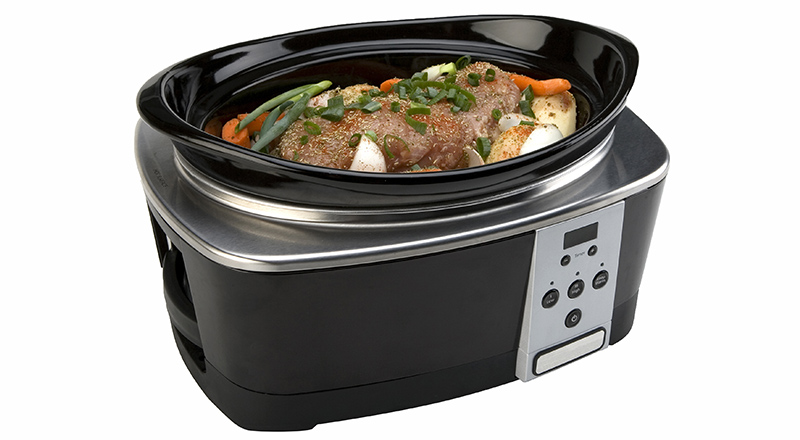Simmer with style

Slow cookers get an update
After a long, busy day, nothing is more inviting than walking into the house to the smell of dinner ready and waiting—slow cooked while you were gone. The cooler fall and winter months are the perfect time for soups, stews, and meats that simmer for hours, melding the flavors so they’re deep and rich, and providing an energy-efficient way to cook.
Slow cookers have come a long way in recent decades. Older-generation slow cookers couldn’t be immersed in water, but today’s models have removable inserts that are safe to put in the dishwasher. Another convenience: prepare the ingredients the night before, store the insert overnight in the refrigerator, and then place the insert into the base in the morning and turn on the unit.
Crockpots usually heat in the 170- to 280-degree range—above the bacteria-killing temperature of 140 degrees.
Some models have a heating element that runs solely along the bottom, which means the food will cook more slowly and there’s a chance of scorching. In other models, heat bands run up the side of the unit as well, producing a more evenly distributed heat.
Pay attention to the heat settings. More basic cookers may only offer warm and hot settings; more advanced models have intermediate settings, including levels for keeping dip or cider warm for hours at a party.
Extra features come in handy
One option for a slow cooker is a programmable timer to turn the unit on or off, or to switch it from a high setting to warm once the cooking is done. Some sound an alarm to alert you when the dish is supposed to be done.
There are slow cookers that come with a probe that fits through an opening in the lid so you can check the internal temperature of meat, or cook to a certain temperature. Some models offer a stovetop feature, allowing you to brown the meat or braise vegetables right in the slow cooker at the start of cooking, for added flavor.
Ponder the purpose when deciding on size
How big a crockpot do you need? Consider what you’ll be cooking—whether your family is big or small, and whether you’ll want to use it for making stock or freezing meals for later. Most models recommend filling the pot from half to two-thirds full for best results.
If you want to feed a crowd—for bringing a dish to a picnic, potluck, or tailgate, for example—look for a model with a clip lock for the lid, to keep the cover from sliding off on the way to the party.

